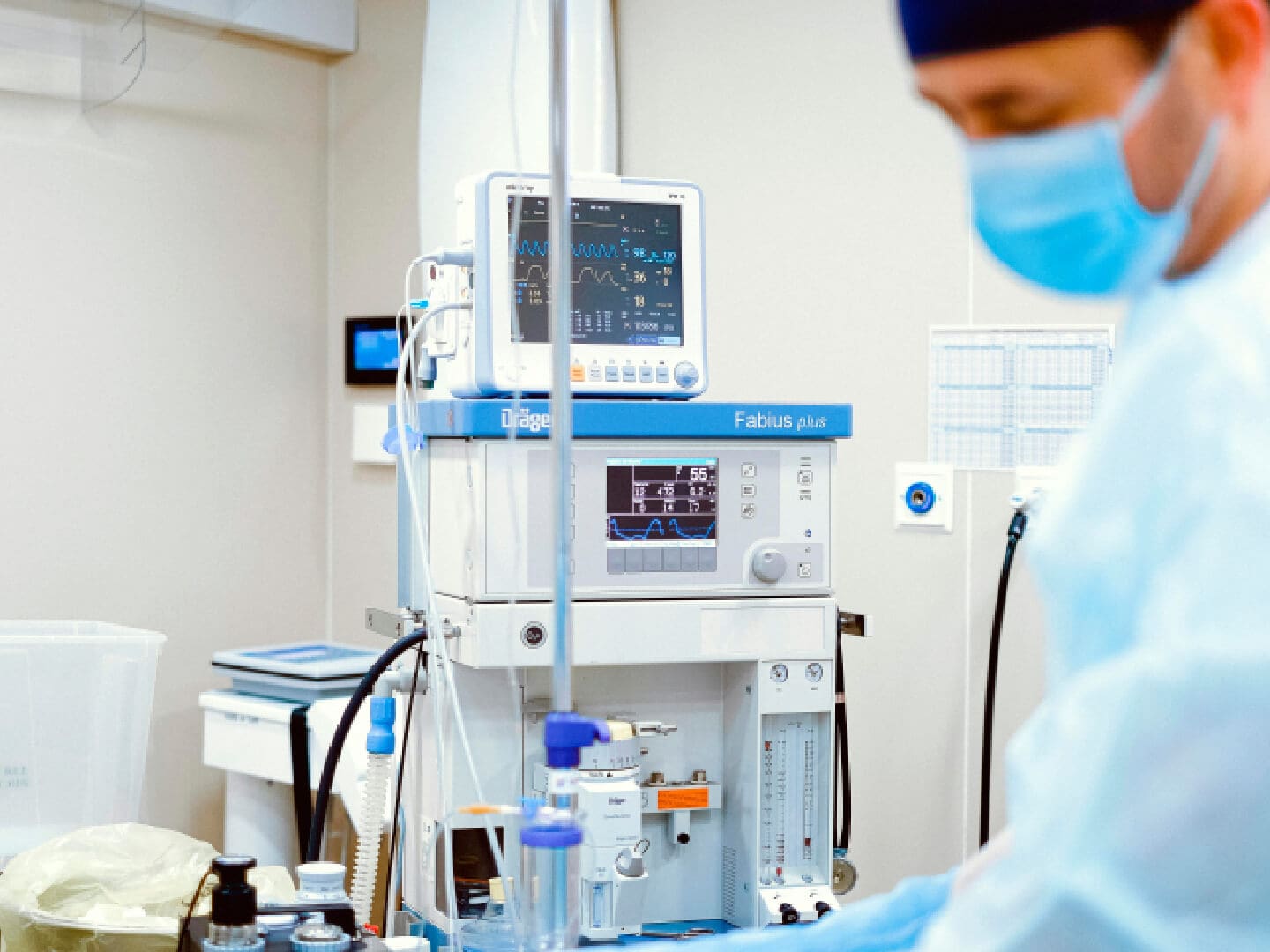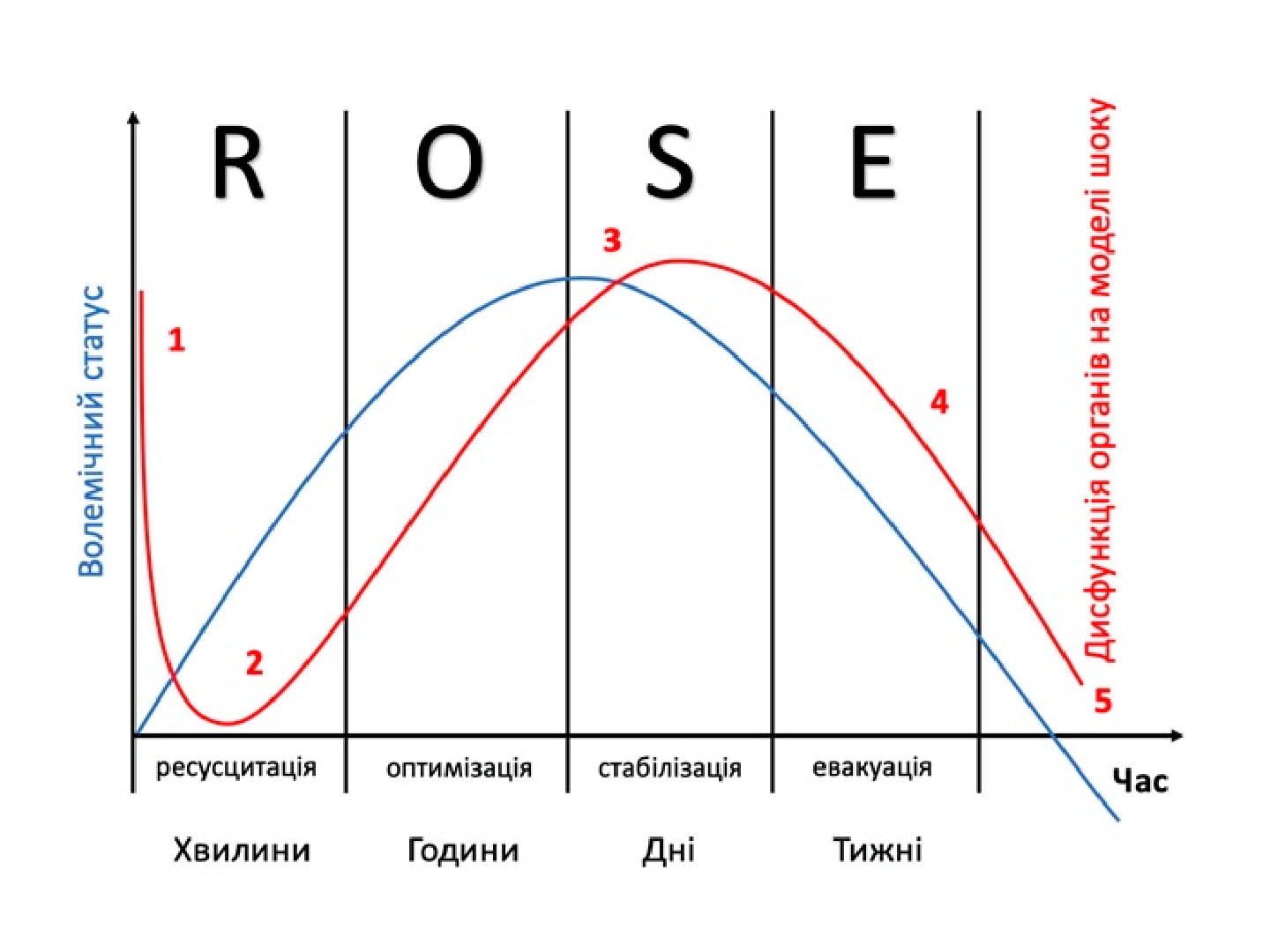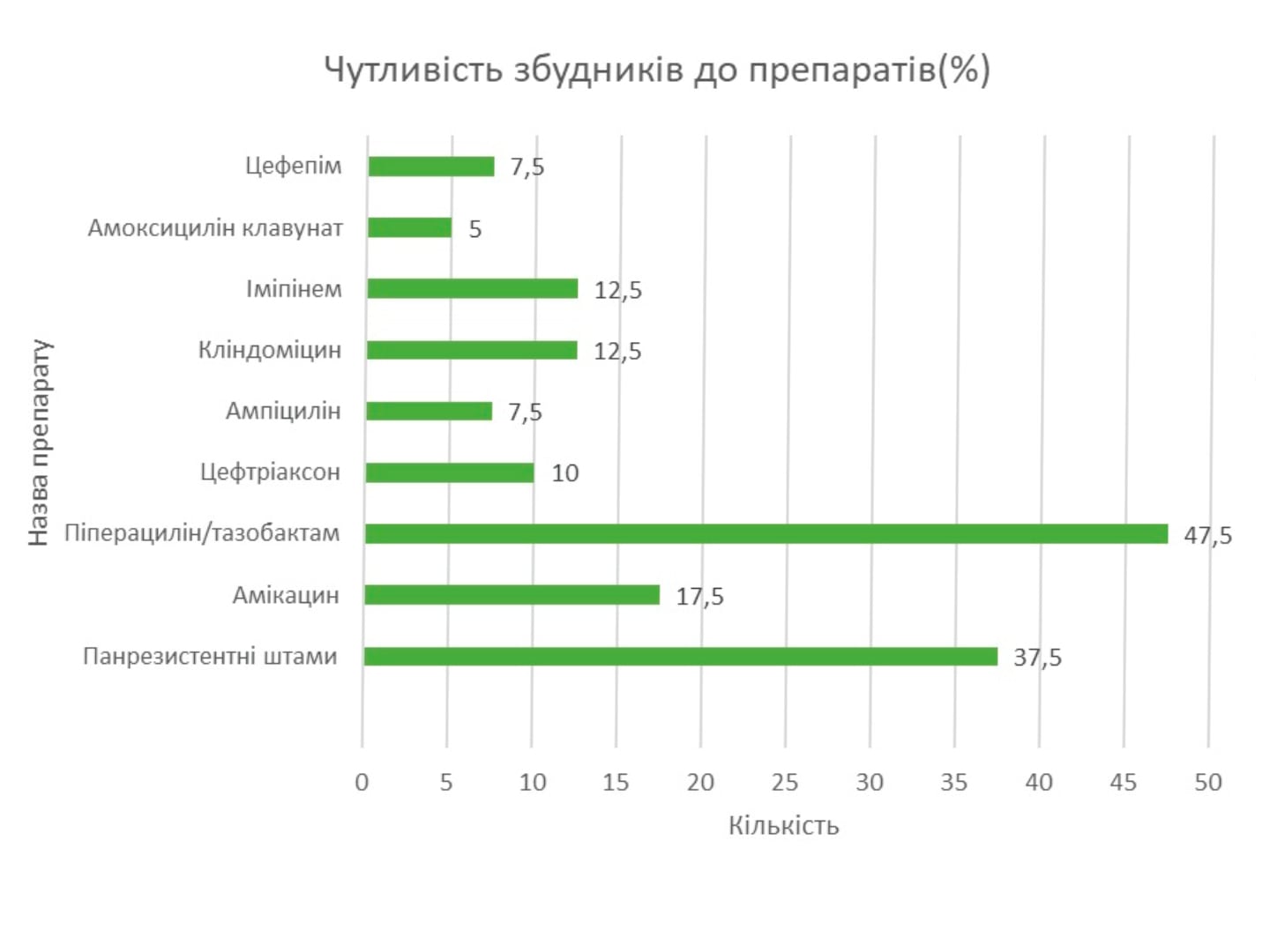The place of modern α-2-agonists in the intraoperative sedation of trauma / orthopedic patients
Abstract. Modern traumatological operations have a number of features: duration, a large pool of age-related patients with low functional reserves, forced position of the body, operations are often under regional anesthesia with a conserved consciousness, which requires special attention from the anesthesiologist. Intraoperative sedation by intravenous agents is used to prevent stress reactions associated with the effect of the patient’s presence on the operation.
One of the classes is α-2 adrenergic agonists, drugs with antinociceptive, anxiolytic, sympatholytic activity, and at the same time, they have a number of side effects in the form of hypo/ hypertension, vasospasm, bradycardia. In this article the place of the modern α-2 agonist dexmedetomedine in the schemes of perioperative management of patients with skeletal injury was considered.
Key words: α-2 agonists, dexmedetomedine, intraoperative sedation, procedure sedation.
Authors:
Domoratskiy A., Kryliuk V., Kuchynska I., Pylypenko T., Pavlenko A., Horban D.
Shupyk National Medical Academy of Postgraduate Education; Kyiv City Clinical Hospital No. 6; Igor Sikorsky Kyiv Polytechnic Institute
Literature:
- “Pathomechanisms and complications related to patient position-ing and anesthesia during shoulder arthroscopy.” Rains DD, Rooke GA, Wahl CJ. // Arthroscopy2011 Apr;27(4):532–41.
- “Hypotensive bradycardic events during shoulder arthroscopic surgery under interscalene brachial plexus blocks.” Song SY, Roh WS. // Korean J Anesthesiol2012;62(3):209–19.
- “Deliberate hypotension in orthopedic surgery reduces blood loss and transfusion requirements: a meta-analysis of randomized con-trolled trials.” Paul JE, Ling E, Lalonde C, Thabane L. // Can J An-aesth2007;54:799–810.
- “Target-controlled infusion (Propofol) versus inhaled anaesthetic (Sevoflurane) in patients undergoing shoulder arthroscopic sur-gery.” Tantry TP, Muralishankar B, Adappa KK, Bhandary S, Shet-ty P, Shenoy SP. // Indian J Anaesth2013;57(1):35–40.
- “Blood pressure response to combined general anesthesia/inter-scalene brachial plexus block for outpatient shoulder arthrosco-py.” Janssen H, Stosch RV, Poschl R, Buttner B, Bauer M, Hinz JM, et al. // BMC Anesthesiol2014; doi: 10.1186/1471–2253–14–50.
- “Cerebral oxygenation in patients undergoing shoulder surgery in beach chair position: comparing general to regional anesthesia and the impact on neurobehavioral outcome.” Aguirre J, Borgeat A, Trachsel T, Cobo Del Prado I, De Andr s J, B hler P. // Rev Esp Anestesiol Reanim2014;61(2):64–72.
- “Neer Award 2012: cerebral oxygenation in the beach chair posi-tion: a prospective study on the effect of general anesthesia com-pared with regional anesthesia and sedation.” Koh JL, Levin SD, Chehab EL, Murphy GS. // J Shoulder Elbow Surg2013; 22(10): 1325–31.
- “Тhe effects of exogenous epinephrine on the incidente of hypo-tensive/bradycardic events during soulder surgery in the sitting position during interscalene block.” Sia S, Sarro F, Lepri A, Barto-li M. // Anesth Analg2003;97:583–8.
- “Intranasal Low-Dose Dexmedetomidine Reduces Postoperative Opioid Requirement in Patients Undergoing Hip Arthroplasty Under General Anesthesia.” Uusalo P, Jtinvuori H, L yttyniemi E, Kosola J, Saari TI // J Arthroplasty. 2019 Apr;34(4):686–692.e2. doi: 10.1016/j.arth.2018.12.036. Epub 2019 Jan 7.
- “Comparison of Intraoperative Sedation With Dexmedetomi-dine Versus Propofol on Acute Postoperative Pain in Total Knee Arthroplasty Under Spinal Anesthesia: A Randomized Trial.” Shin HJ, Do SH, Lee JS, Kim TK, na HS // Anesth Analg. 2019 Dec;129(6):1512–1518. doi: 10.1213/AnE.0000000000003315.
- “Does kinesiophobia affect the early functional outcomes follow-ing total knee arthroplasty?” G ney-Deniz H1, Irem Kınıklı G1, alar 2, Atilla B2, Yksel 3. // Physiother Theory Pract. 2017 Jun;33(6):448–453. doi: 11.1080/09593985.2017.1318988. Epub 2017 May 8.
- Can J Anaesth. 2010 Jan;57(1):39–45. doi: 10.1007/s12630–009–9231–6. Epub 2009 Dec 29. “Intravenous dexmedetomidine, but not midazolam, prolongs bupivacaine spinal anesthesia.” Kaya Fn1, Yavascaoglu B, Turker G, Yildirim A, Gurbet A, Mogol EB, Ozcan B. // Can J Anaesth. 2010 Jan;57(1):39–45. doi: 10.1007/s12630–009–9231–6. Epub 2009 Dec 29.
- “Comparison of Intravenous Dexmedetomidine with Midazolam in Prolonging Spinal Anaesthesia with Ropivacaine.” Rekhi B1, Kaur T, Arora D, Dugg P // J Clin Diagn Res. 2017 Feb;11(2):UC01-UC04. doi: 10.7860/JCDR/2017/23874.9344. Epub 2017 Feb 1.
- Rains DD, Rooke GA, Wahl CJ. Pathomechanisms and Complica-tions Related to Patient Positioning and Anesthesia During Shoul-der Arthroscopy. Arthroscopy: The Journal of Arthroscopic & Related Surgery [Internet]. Elsevier BV; 2011 Apr;27(4):532–41. Available from: https://doi.org/10.1016/j.arthro.2010.09.008
- Song SY, Roh WS. Hypotensive bradycardic events during shoulder arthroscopic surgery under interscalene brachial plexus blocks. Korean Journal of Anesthesiology [Internet]. The Korean Society of Anesthesiologists; 2012;62(3):209. Available from: https://doi.org/10.4097/kjae.2012.62.3.209
- Paul JE, Ling E, Lalonde C, Thabane L. Deliberate hypotension in orthopedic surgery reduces blood loss and transfusion require-ments: A meta-analysis of randomized controlled trials. Canadian Journal of Anesthesia/Journal canadien d’anesth sie [Internet]. Springer Science and Business Media LLC; 2007 Oct;54(10):799–810. Available from: https://doi.org/10.1007/bf03021707
- Tantry T, Muralishankar B, Adappa K, Bhandary S, Shetty P, Shenoy S.Target-controlled infusion (Propofol) versus inhaled anaesthetic 13 Огляд / ReviewПеріопераційна медицина (Perioperarive Medicine). – 2020. – Том 3, №1(Sevoflurane) in patients undergoing shoulder arthroscopic surgery. Indian Journal of Anaesthesia [Internet]. Medknow; 2013;57(1):35. Available from: https://doi.org/10.4103/0019–5049.108559.
- Janssen H, Stosch R von, Pschl R, B ttner B, Bauer M, Hinz JM, et al. Blood pressure response to combined general anaesthesia/interscalene brachial plexus block for outpatient shoulder arthros-copy. BMC Anesthesiology [Internet]. Springer Science and Busi-ness Media LLC; 2014 Jun 30;14(1). Available from: https://doi.org/10.1186/1471–2253–14–50.
- Aguirre J, Borgeat A, Trachsel T, Cobo del Prado I, De Andr s J, Bhler P. Cerebral oxygenation in patients undergoing shoulder surgery in beach chair position: Comparing general to regional anesthesia and the impact on neurobehavioral outcome. Revista Espaola de Anestesiologa y Reanimacin [Internet]. Elsevier BV; 2014 Feb;61(2):64–72. Available from: https://doi.org/10.1016/j.redar.2013.08.002.
- Koh JL, Levin SD, Chehab EL, Murphy GS. neer Award 2012: Cere-bral oxygenation in the beach chair position: a prospective study on the effect of general anesthesia compared with regional anes-thesia and sedation. Journal of Shoulder and Elbow Surgery [In-ternet]. Elsevier BV; 2013 Oct;22(10):1325–31. Available from: https://doi.org/10.1016/j.jse.2013.01.035.
- Sia S, Sarro F, Lepri A, Bartoli and M. The Effect of Exogenous Epinephrine on the Incidence of Hypotensive/Bradycardic Events During Shoulder Surgery in the Sitting Position During Intersca-lene Block. Anesthesia & Analgesia [Internet]. Ovid Technologies (Wolters Kluwer Health); 2003 Aug;97(2):583–8. Available from: https://doi.org/10.1213/01.ane.0000070232.06352.48.
- Uusalo P, Jtinvuori H, L yttyniemi E, Kosola J, Saari TI. Intrana-sal Low-Dose Dexmedetomidine Reduces Postoperative Opioid Requirement in Patients Undergoing Hip Arthroplasty Under General Anesthesia. The Journal of Arthroplasty [Internet]. Else-vier BV; 2019 Apr;34(4):686–692.e2. Available from: https://doi.org/10.1016/j.arth.2018.12.036.
- Uusalo P, Jtinvuori H, L yttyniemi E, Kosola J, Saari TI. Intrana-sal Low-Dose Dexmedetomidine Reduces Postoperative Opioid Requirement in Patients Undergoing Hip Arthroplasty Under General Anesthesia. The Journal of Arthroplasty [Internet]. Else-vier BV; 2019 Apr;34(4):686–692.e2. Available from: https://doi.org/10.1016/j.arth.2018.12.036.
- Shin HJ, Do SH, Lee JS, Kim TK, na HS. Comparison of Intraoper-ative Sedation With Dexmedetomidine Versus Propofol on Acute Postoperative Pain in Total Knee Arthroplasty Under Spinal An-esthesia. Anesthesia & Analgesia [Internet]. Ovid Technologies (Wolters Kluwer Health); 2019 Dec;129(6):1512–8. Available from: https://doi.org/10.1213/ane.0000000000003315.
- Gney-Deniz H, Irem Kınıklı G, alar , Atilla B, Y ksel. Does ki-nesiophobia affect the early functional outcomes following total knee arthroplasty? Physiotherapy Theory and Practice [Internet]. Informa UK Limited; 2017 May 8;33(6):448–53. Available from: https://doi.org/10.1080/09593985.2017.1318988.
- Kaya Fn, Yavascaoglu B, Turker G, Yildirim A, Gurbet A, Mogol EB, et al. Intravenous dexmedetomidine, but not midazolam, prolongs bupivacaine spinal anesthesia. Canadian Journal of Anesthesia/Journal canadien d’anesth sie [Internet]. Springer Science and Business Media LLC; 2009 Dec 29;57(1):39–45. Available from: https://doi.org/10.1007/s12630–009–9231–6.
- Rekhi BK. Comparison of Intravenous Dexmedetomidine with Midazolam in Prolonging Spinal Anaesthesia with Ropivacaine. JOURnAL OF CLInICAL AnD DIAGnOSTIC RESEARCH [Internet]. JCDR Research and Publications; 2017; Available from: https://doi.org/10.7860/jcdr/2017/23874.9344.






